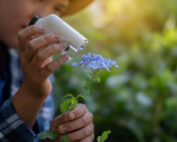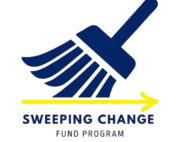
Suzanne E. Hiller
Educators who have worked with adolescent students are commonly aware that peers can have a strong influence on the attitudes, behaviors, and performance of learners. Interestingly, adolescence can be classified between the ages of 10-25 due to the elongated economic dependency students have on their families in comparison to generations in the past (Steinberg, 2015).
Researchers who want to assess peer influence within educational studies have a range of methods that can be useful. These techniques are applicable to studies related to outdoor contexts, such as citizen science (individuals help professional scientists with scientific-based research); outdoor classroom projects and stations; and Bioblitz ( individuals identify living organisms based on species within a specified region; National Geographic Society, 2023).
There are many types of quantitative data collection instruments that focus on the influence of peers within a given context. For instance, Britner and Pajares (2006) created the Sources of Science Self-Efficacy Scale with four subscales: (a) mastery experiences; (b) vicarious experiences (influences of adults); (c) social persuasion, and (d) physiological states (e.g., anxiety). The subscale of social persuasion focuses on peer influence. A sample question includes: “My friends tell me I am good at science.”
Another example of a quantitative method would be the Student Subjective Well-Being Questionnaire (Renshaw & Chenier, 2018). The four subscales of this measure include: joy of learning, classroom connectedness, educational purpose, and academic self-efficacy. A sample item for the School Connectedness scale is “I feel like people at school care about me.” While this type of item does not specify whether the people are adults or peers, the scale could be used as a form of triangulation to compare findings with different methods.
For older students a sense of belonging within an educational community can be critical. Goodenow’s Psychological Sense of School Membership (1993) is appropriate for Grades 6-12 to measure participants’ perceptions of belonging within a school setting. A sample item includes “Other students in my school take my opinions seriously.”
Interviews are a common data collection tool, particularly with a qualitative semi-structured interview format. Using both quantitative measures and qualitative interviews, the researcher can determine if they reach the same conclusions using triangulation and allows for deeper understanding about the topic of study (Kitsantas et al., 2024).
Another option is to include reflective writing prompts or drawing prompts. Participants can be cued to write/draw about their experiences during a particular outdoor activity. These drawing are useful in guiding the interviews by asking students about the individuals, meanings, and processes in their drawings. For instance, Ayotte-Beaudet et al. (2023) had participants draw about their experiences using a clay caterpillar decoy to study ecological relationships based on markings. The drawings were helpful in eliciting a discussion during a semi-structured interview protocol. Aside from guiding qualitative interviews, drawings can be coded using qualitative techniques as part of a comparative analysis method.
This discussion includes a few examples of data collection instruments for assessing peer influences. There is a wide range of choices. Infusing several different types of methods helps to illuminate how interactions among students can influence participants within a research study and serve as a form of triangulation. Ultimately, examining these dynamics inform best practices for outdoor initiatives.
Share
LATEST RESOURCES
Engaging Digital Natives Through Literacy, Outdoor Learning, and Technology
Engaging Digital Natives Through Literacy, Outdoor Learning, and Technology
Erik […]
Pages to Puddles: Story Walks as a Creative Tool for Assessing Stormwater Knowledge
Pages to Puddles: Story Walks as a Creative Tool for […]
Teaching and Learning about Obligate Species in Vernal Pools
Teaching and Learning about Obligate Species in Vernal Pools
Suzanne E. […]





![A logo for The Sweeping [...]
</p srcset=](https://blueswallowfarmfoundation.org/wp-content/uploads/2025/03/sweeping-change-fund-1024x538.jpg)

